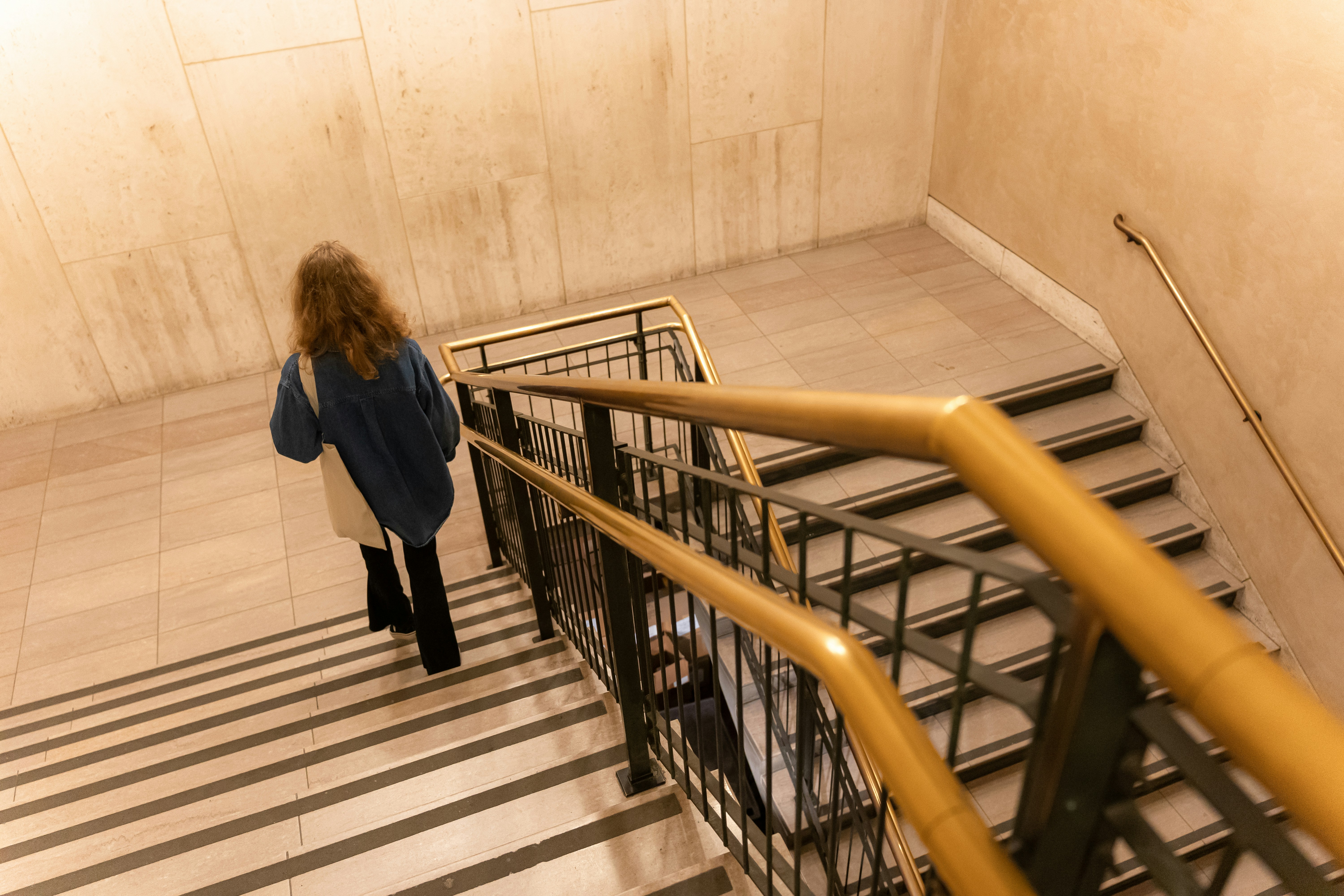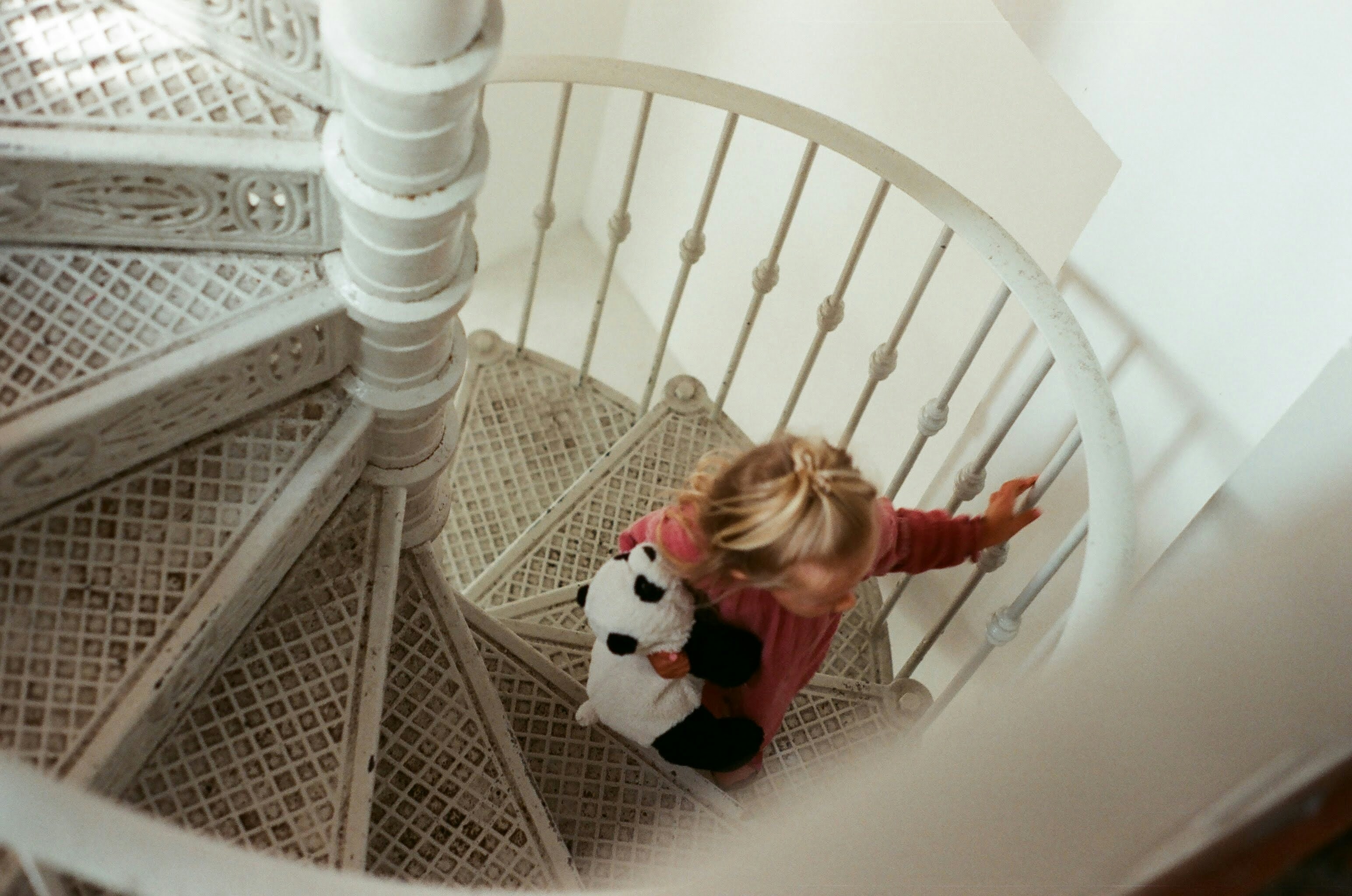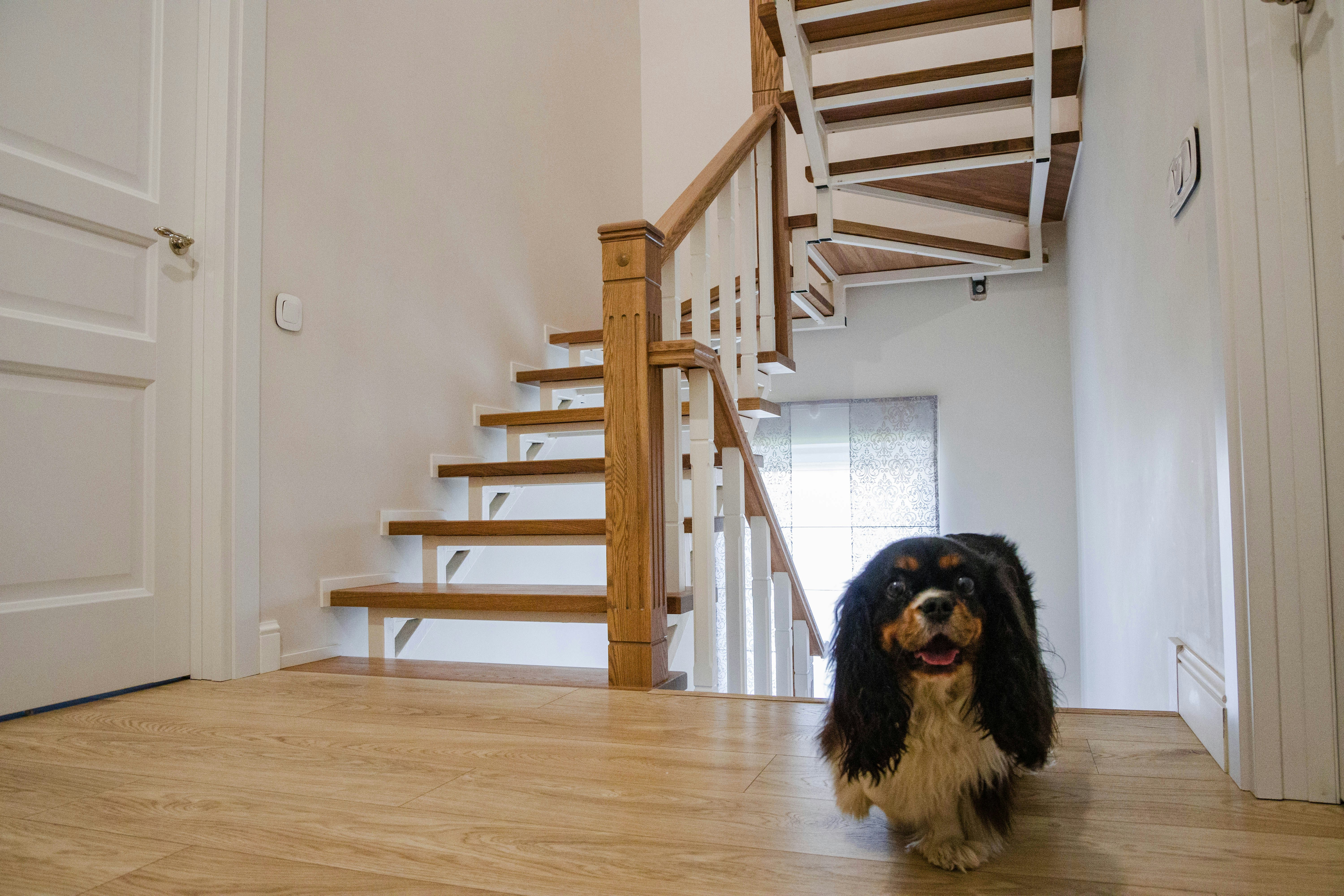Upgrading Your Stairs: Safety First
Thinking about upgrading your stairs? This guide will show you how to improve safety considering childproofing, senior safety, and design!
Upgrading your staircase isn’t just about style it’s a crucial part of keeping your home safe and functional. Before you start, it’s smart to understand the overall Home Renovation Cost in New York to help you plan your budget effectively. This guide walks you through assessing your current staircase for safety hazards, worn materials, and design improvements, plus includes pro tips for childproofing and senior safety considerations.
Imagine living in a house without stairs. It's rather unbelievable, isn't it? Though they are sometimes overlooked in favour of other features in our living areas, staircases are essential for creating level transitions and defining the architectural style of our houses and structures.
Although staircases are useful for moving from one floor to another, they are significant for other reasons as well. Enhance your smart budgeting skills with tips, tools, and a renovation cost calculator in Smart Budgeting: Tips, Tools, and Renovation Cost Calculator.
Balancing Safety and Elegance in Staircase Designs
Speaking of the dynamic pair in staircase design, let's discuss safety and aesthetics. In order to ensure both safety and aesthetic appeal, designing stairs is similar to performing a delicate balancing act. It's about designing an entire space where safety and style coexist harmoniously, not simply the stairs and railings.
Consider installing a staircase that will enhance the aesthetics of your house in addition to providing you with easy access between floors. It's an interplay between form and function, where every step is a statement and every handrail is a brushstroke on the canvas of your home. This is the essence of the combined focus on safety and aesthetics in staircase design. Conquer home renovation costs with smart budgeting strategies in Conquer Home Renovation Cost: Smart Budgeting Strategies.
The Drive Behind Transformation: Unveiling the Motivation for Staircase Upgrades
How come we are now compelled to renovate our stairwells? All of this ultimately comes down to the fact that our living environments are always changing. In response to our evolving wants and preferences, homes and buildings are flexible constructions. We upgrade our staircases because we want to make our living conditions more aesthetically pleasing, we are driven to improve, and we are committed to safety.
Basically, it's about designing areas that not only withstand the passage of time but also change and grow with us. Renovating stairs becomes a statement of our commitment to building houses that reflect not just who we are now but also who we hope to become in the future.
So let’s gear up! This is going to be a tour of exploration that we are going to undertake. Together, let's explore the exciting world of staircase improvements, where each ascending step is reason for joy and each descending step signals a seamless transition.
The Staircase Safety Imperative
Our upgrade journey's cornerstone is staircase safety. We'll examine the urgent need for safety enhancements, highlight concerning data, and explore universal problems in this first section.
Statistics on Staircase Accidents and Injuries
A Prevalence of Staircase related Incidents
Stairs are typically the scene of many incidents each year in the quiet corners of our homes and public spaces. The statistics depicts a concerning image, highlighting the urgent need to address the safety issues with staircases. Incidents on stairs, whether due to a momentary lack of focus or a physical obstacle, unfortunately occur more often than we would like to believe.
According to what the National Safety Council stated:
Staircase accidents cause more than a million injuries in the US each year.
After auto accidents, staircase occurrences are the second most common source of injuries.
Every year, staircase accidents are thought to be the cause of over 12,000 fatalities.
Examining these numbers in further detail exposes many circumstances that lead to mishaps. Mobile device distractions and the intricacies of multipurpose areas, where stairwells coexist with different activities, are important factors. For a thorough understanding, it's critical to comprehend these nuances. The frequency of these occurrences highlights the urgency of taking prompt action and compels us to reevaluate our approach to staircase design. It goes beyond just going up and down; it's about making sure that each step is safe. Unveil home renovation costs and master budgeting by area and category in Unveiling Home Renovation Costs: Budgeting by Area & Category.
Impact on Different Age Groups
Accidents involving staircases affect everyone, irrespective of age. The impact is enormous, regardless of whether it is on curious young children learning how to climb stairs or elderly people with difficulty walking. To guarantee that staircase security measures are effective, it is critical to understand the particular dangers associated with each age group.
Stairs can rapidly become a dangerous playground for children. It becomes essential that you keep attention and install barriers for protection. Using slip resistant materials and installing safety gates are two basic childproofing strategies that can significantly reduce potential risks. Seniors, on the other hand, deal with problems including decreased mobility and balance. Careful design modifications are required to handle these issues. What could be a hazard can become a safe pathway with the addition of non slip materials and handrails that are appropriate in height and offer a secure hold. We can design stairwell safety solutions that are particular to each age group and meet their needs by knowing the dangers that are associated with each age group.
Install Safety Gates: Protect young children from falls by installing safety gates at the top and bottom of the stairs.
Assessing Your Staircase
Now, let's do an in depth assessment of your staircase in this section. This part makes sure that in this guide, we take care of your aesthetic preferences as well as safety considerations, resulting in a cohesive combination that meets both your practical needs and individual taste. Delve into eco friendly modern roof ideas with Natural, Roofing: Explore Eco Friendly Modern Roof Ideas.
Conducting a Safety Audit
Identifying Potential Hazards
As our first concern is making sure everyone is secure, let’s start by carefully inspecting your staircase for any possible risks. Step back and observe everything with great attention as you wander slowly up and down. The potential for risk could be created by steps that are loose or broken, so look for any of these. Check the lighting conditions as well. Poor lighting, especially at night, might make it difficult to navigate the staircase as discussed previously. Look at the depth and height of each step for a good while. Are they all equivalent? Errors and mishaps could result from step proportions that are inconsistent. Remember to look at the handrails. Do they provide the required support and are they securely linked? Plan the perfect open shelving kitchen with expert guidance in Plan Perfect Open Shelving Kitchen.
Keep in mind that safety is more than simply being aware of what is happening right now; it also includes planning for possible future hazards. By recognising and resolving these risks right away, you may successfully prevent accidents and make sure that your staircase is safe for everyone to use.
Neglecting Worn Materials Can Lead to Structural Issues: Address any signs of wear and tear, rot, or rust on existing staircase materials promptly to prevent future problems.
Evaluating the Condition of Existing Materials
Now that you've located any possible dangers in your staircase, let's turn our attention to the materials that were utilised to build it. Since they are used constantly, staircases experience wear and tear. Therefore, it is essential to evaluate the state of every part.
Examine wooden staircases more closely and keep an eye out for any indications of corrosion or rotting. Steps that are cracked or warped not only risk safety but also look bad overall. Keep an eye out for rust if your staircase is made of metal. This is a serious issue that can compromise both appearance and safety. Consider any rusting to be a warning indication that has to be addressed right away. Master open shelving styling, material, and placement tips in Open Shelving Styling, Material, and Placement Tips.
Throughout the upgrading process, this analysis provides the foundation for wise decision making. You can concentrate on particular modifications and make sure that they add to longevity and durability by taking account of your staircase's current condition.
Evaluating the Aesthetics of the Current Staircase
Analyzing Design Elements
As discussed earlier, beyond providing safety, your staircase really influences how the space looks overall. Examining the design components requires that you consider your staircase to be the focal point of the area. Look for a moment at the present style that it represents. Does it complement the rest of your room's decor?
Take into account the staircase's overall architecture, the handrails' style, and the shape of the steps. Does it have a more traditional, elaborate look, or is it presenting a more modern, sleek vibe? Gaining insight into these current design components helps you decide whether to upgrade with a new theme or to stick with the current one.Decide whether you need professional help or if a DIY approach is suitable with Pro Help or DIY Hustle? Your Renovators Crew Guide.
Considering Compatibility with the Surrounding Space
Your staircase should be a seamless part of the architecture of your house or structure, blending in with the surroundings. Consider for a moment how effectively the staircase you currently have fits into the overall visual dynamics. Does it make the place feel more lively or does it seem out of place?
Think on the colour scheme: does it complement the nearby walls and flooring? Consider if the staircase adds to the room's openness or if it makes it feel smaller. The result guarantees that when you upgrade your staircase, it will blend in smoothly with the space's current aesthetics in addition to looking great. Design the perfect outdoor living area with tips and tricks provided in Designing the Perfect Outdoor Living Area: Tips and Tricks.
Conclusion
With a little inspection and creativity, you can transform your staircase into a safe and stylish haven. Remember, your staircase is more than just a way to get from one floor to another it's a vital part of your home that deserves your attention. By prioritizing safety first and incorporating your personal touch, you can create a staircase that you'll love using for years to come, with complete peace of mind. Now get out there and start planning your dream staircase upgrade
Renovate to live, Renotive to thrive!
FAQs
Are there any regulations regarding the minimum width of staircases in residential buildings?
Yes, building codes specify minimum staircase width. In residential buildings, the minimum clear width is typically around 36 inches (91 cm). However, local regulations may vary, so consult your local building authority.
How can I make a narrow staircase feel more spacious?
Opt for open balustrades (such as glass or thin metal spindles) to maintain sightlines. Lightcolored walls and treads create an illusion of space. Mirrors strategically placed near the staircase can also help.
How can I enhance the safety of my staircase?
To improve safety, consider installing sturdy handrails on both sides of the staircase. Ensure proper lighting, especially on the steps. Additionally, maintain consistent step dimensions and eliminate any tripping hazards.














